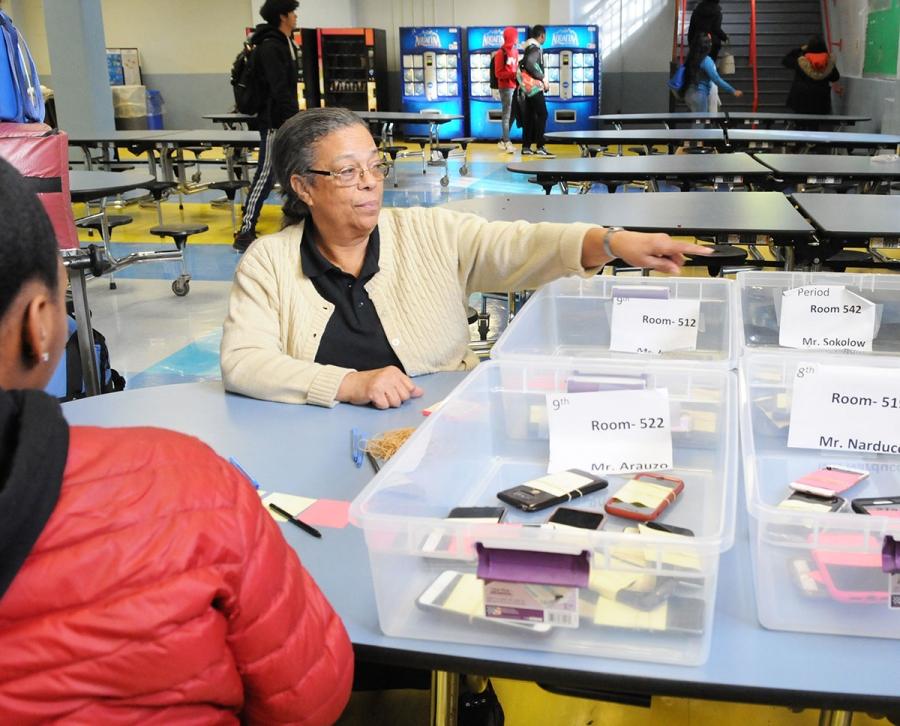What’s a teacher to do when students are focused on their cellphones instead of the day’s lesson?
At the Brooklyn Academy of Science and the Environment in Crown Heights, which has about 380 students, the situation galvanized the UFT chapter. Members organized parents and students in their quest for a solution — and they succeeded.
The high school now is virtually a no-cellphone zone. Teachers say students are more attentive in class and they anticipate substantial improvement in grades, increased credit accumulation and better graduation rates.
Chapter Leader Caren Cleckley said students were texting friends during class and using their phones to cheat on tests. A minor disagreement between students often escalated via cellphone. Teachers had to repeatedly tell students to put away their phones.
In the fall of 2018, the school tried using Yondr pouches that allowed students to hold their phones but not use them. The system failed because students figured out how to open the pouches.
It was clear something had to be done, so Cleckley got together with four other UFT members in the spring of 2019 to address the problem. They received support and guidance from UFT Special Representative Jason Goldberg and Betty Zohar, the UFT parent-community liaison for Brooklyn. The members held weekly meetings with fellow teachers and parents and researched how other schools handled the issue. Even the principal, Gail Lambert, who supports the new policy, came to a meeting.
Some students also favored a policy to remove phones. Joyce Vincent, the PTA vice president, had already heard about the problem from her daughter, an 11th–grader at the school. “She attended one of our meetings and said the cellphones were destructive, not constructive,” Vincent said.
The school’s head of school safety gave the group a crucial piece of data: Out of 67 reported classroom incidents for the first two months of the 2018–19 school year, 87% involved a cellphone, including cyberbullying and sexting.
At the urging of the UFT’s Goldberg and Zohar, members and parents took that finding to the city Department of Education’s Panel for Educational Policy in June 2019 and requested funding for cellphone lockers. When funding was denied, the school started talking about daily collection of phones.
The policy instituted this school year has the dean collecting cellphones (labeled with the student’s name) at the beginning of the day. They are secured in the parent coordinator’s office until school aides return them to students after their last class.
English teacher Karen Evans, one of the UFT members who spearheaded the undertaking, said the school is capturing 80% to 90% of cellphones every day.
“It’s still a work in progress,” she said. “But it is working.”
The school has seen dramatic results since the policy was instituted. In September and October, all school incidents are down 25% and there have been no cellphone incidents, according to the school’s head of school safety.
The principal reported an increase of more than 7% over last year in credit accumulation from the beginning of the school year to the first marking period — crucial for graduating seniors. Special education students had a gain of 15% over the same period.
Students also are paying more attention in class — and to each other.
“The kids are talking to each other at lunch,” Evans said, “instead of looking at their phones.”
